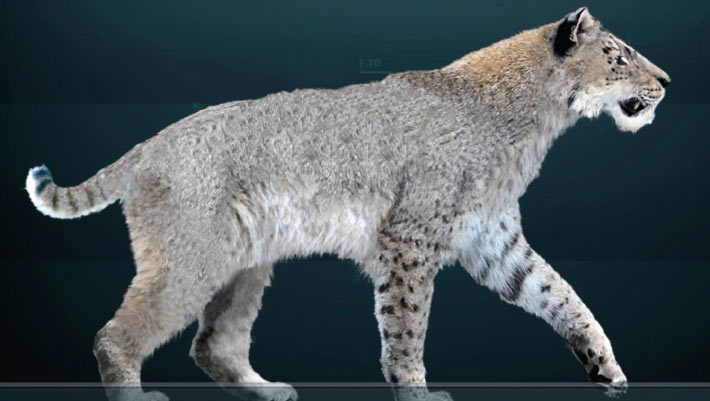The 36,000-year-old frozen specimen from Yakutia belongs to Homotherium latidens, a species of scimitar-toothed cat that inhabited Eurasia during the Pliocene and Pleistocene epochs, and significantly differs from a modern lion cub in the elongated front legs, the unusual shape of the muzzle with a large mouth opening and small ears, the very massive neck region, and the dark coat color.
Homotherium latidens was between 1.5 and 2 m in length, up to 1.1 m in height, and weighed up to 200 kg — about the average size of a modern lion or tiger.
However, its physical appearance differed from other big cats: the extinct species had long saber-like canines, a sloping back, and a short tail.
“Homotherium was widespread in the Plio-Pleistocene of Eurasia, Africa, and Americas,” said lead author Dr. Alexey Lopatin and his colleagues.
“For a long time, the latest presence of Homotherium in Eurasia was recorded in the Middle Pleistocene.”
“A significant event was the discovery of the mandible of the Late Pleistocene Homotherium latidens from the North Sea, which is dated to 28,000 years ago.”
“The largest number of Late Pleistocene finds of Homotherium is concentrated in North America (more than 30 localities), where they traditionally classified in the species Homotherium serum.”
In their new study, the authors examined the frozen mummified carcass of a Homotherium latidens cub found in the Pleistocene permafrost at the locality of Badyarikhskoe on the Badyarikha River in the northeast of Yakutia, Siberia.
“The numerous bones of mammoth fauna representatives are collected from the loess-like loams of the Yedoma horizon in this locality,” they said.
According to the researchers, the Badyarikha specimen is approximately 36,000 years old.
“The specimen includes the head and the anterior part of the body preserved approximately to the caudal edge of the chest,” they said.
“There are also incomplete pelvic bones articulated with the femur and…
Read the full article here





